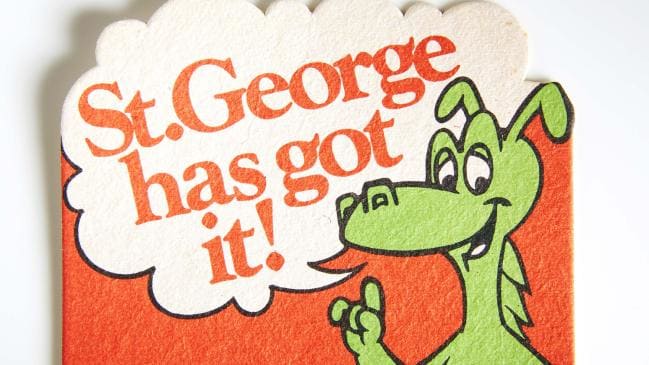**As rights to this article belong to the original publisher, The Australian’s The Deal Magazine, please contact them for permission to republish.**
The essence of marketing is understanding what consumers need, and creating a product or service to fulfil it. For centuries, banks have understood that consumers wanted to put their money in a safe place and get access to it when they needed to. Or borrow money to buy a house or start a business, and pay it back in instalments. Or have a means by which they can pay their bills, or somewhere to obtain some sound financial advice.
Banks thus became businesses based on trust. The better ones were also great at personal service, and with their involvement in local housing and businesses, banks and their managers became lauded members of the community. In fact, a job in a bank was much sought after. And rarely did banks talk about their success overtly – satisfied customers did that for them.
So how have our big four banks ended up being the face of the royal commission into the financial sector? How did their brand reputations slip so far?
Through the ’80s, ’90s and 2000s, as listed entities the banks’ focus drifted towards pleasing shareholders before customers, employees and the community. And the perception was that the investors wanted consistent short-term results. The banks started making decisions accordingly, often at odds with what their customers needed and wanted. Their vocabulary shifted from trust and customer service and community, to acquisitions, mergers, job cuts, efficiencies, profits and offshoring.
The royal commission provides another line-in-the sand moment for the Big Four.
The GFC gave banks a brief second chance to reposition themselves, to tap into the renewed sentiment that the Big Four – four of the top 11 in the world – were indeed great corporate citizens and leaders we could trust with our money. There were banks that would once again future-proof themselves by taking a long-term view on what consumers wanted from a bank in an increasingly technology-enabled world.
To their credit, the marketers at companies such as CommBank, NAB and Westpac’s subsidiary, the Bank of Melbourne, pursued this path. CommBank pushed its technology platform hard, making the customer experience easier for individual and business customers. It has also recently moved its call centres back to Australia. NAB “broke up” with the other three, trying to distance itself from the corporate vernacular and claiming a focus on the customer. Bank of Melbourne reopened as a bank that understood what Melburnians needed and became the fastest-growing major bank in the country.
But at the same time, corporate relations teams at the Big Four continued to push the investor strategy and message and overtly report about how much better their results were compared to the others. Soon, at every reporting cycle, the major news outlets took this message from the financial news to the mainstream news, and started to question why and how the Big Four were making so much profit. That sense of trust was being diluted, as the investor strategy, execution and message began outweighing the marketing one.
The royal commission provides another line-in-the sand moment for the Big Four from a brand and reputation point of view. It’s no longer just the customers, employees and the community the big four banks need to please, it’s also the investors. It’s a quadruple bottom line. Westpac reiterates this in its corporate vision and strategy by stating that it aims to build enduring customer relationships, be a community leader and a place where the best people want to work, and deliver superior returns for shareholders. So what are the marketing levers to pull in the search for this win-win-win-win? And which should the banks prioritise?
One is a long-term investment in the brand. There is increasing evidence that brand reputation is driving consumers’ choices of where to bank. ANZ has outspent the other three banks in the past four years in this area. Just over 65 per cent of its media spend is brand related through campaigns and sponsorships, compared with NAB, CommBank and Westpac, who have been spending between 35 per cent and 45 per cent. Interestingly, CommBank made a major shift in 2017, matching ANZ’s brand spend.
The Big Four need to remember their investor messages will be heard in mainstream news.
Next, the Big Four need to remember that their investor messages are going to be heard in both the financial and mainstream news, and this will also drive brand reputation. They need to alter their language accordingly, from corporate vernacular to consumer speak. For example, NAB’s profit last year was $6.6 billion, which was the news headline, but what wasn’t heard as loudly was that it gave $5.4 billion of that back to its shareholders as a dividend and $45 million to its communities.
The Big Four often forget that they have a unique voice to tap into – their 160,000 employees. Word of mouth has always been the most powerful form of marketing, and if those employees tell the positive story of banking to their friends and family, it might just be another way to help improve their brand reputations.
They also need to walk, not talk, when it comes to what they’re providing their customers, particularly in a technology-driven world where Apple, not other banks, is the yardstick. Customers are tired of feeling like an account number when they have seamless personalised experiences through technology with other companies with which they deal. NAB acknowledged this challenge in its November investor presentation when it highlighted the need to balance higher customer expectations with disruptive and costly new technologies.
In the UK, Lloyds Bank recently spent £500 million ($890 million) over three years to create the world’s best banking experience for its customers, with digital at its core. It’s a big number, but Lloyds’ aim was to ensure the new technology drove savings of the same amount from old systems and ways of doing things. The Big Four would be wise to quickly reinvest a large part of their profits into similar programs. If they can use technology to move customers to a “personalised” platform from a “transaction” platform, they will start to build goodwill. And reignite the sense of personal service that was the essence of the admired era of banking.
As Alibaba CEO Jack Ma so eloquently put it a number of times over the past decade, “customers are number one, employees are number two and shareholders are number three”. Add the inherent community link that banks have through housing and businesses and it’s a simple reminder of the priorities for success for the big four banks. Ma has gone one step further just to make his point clear: “It’s the customer who pay us the money, it’s the employees who drive the vision, and it’s the shareholders who when the (financial) crisis comes, these people ran away. My customers and my people stayed,” he has said.
If any of the banks are willing to underline the order of priorities between the customer, employees, community and shareholders as Ma has, they might well come out of the royal commission period with their brand reputation in a better place.
This article was originally published in The Australian’s The Deal Magazine. Read the original article.








